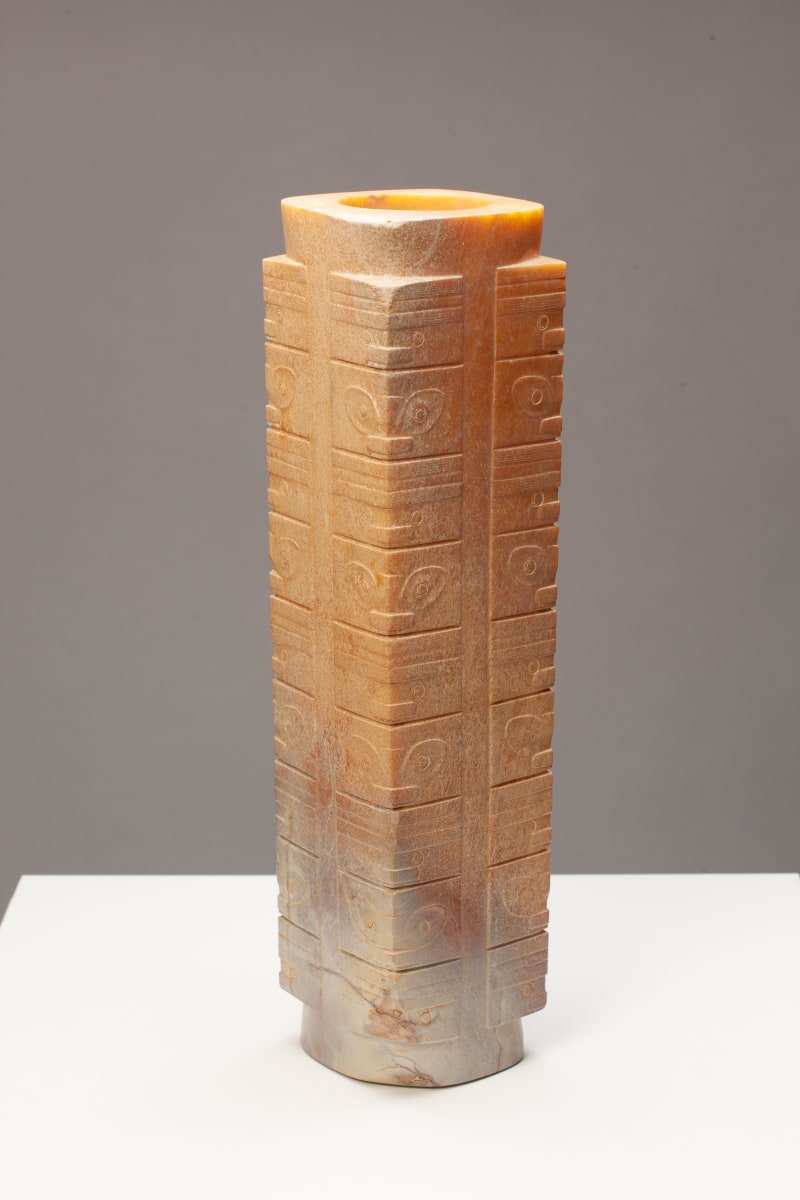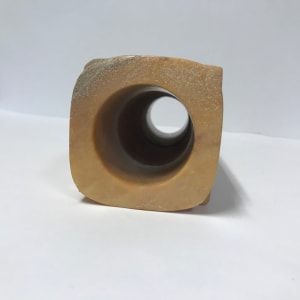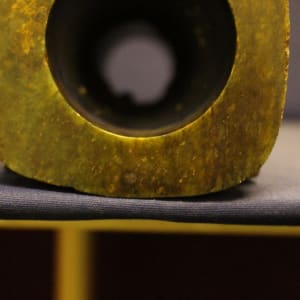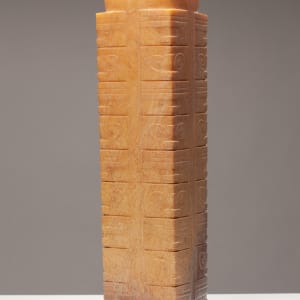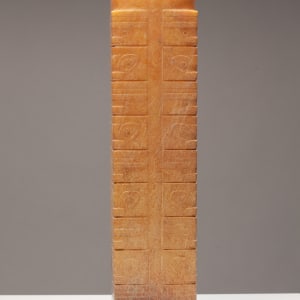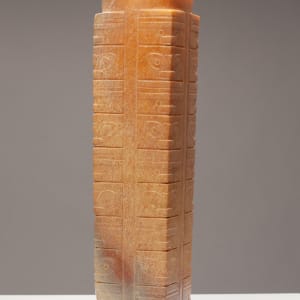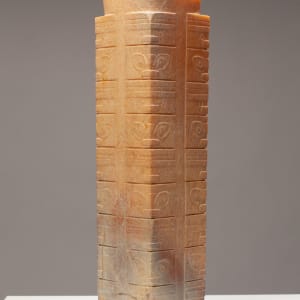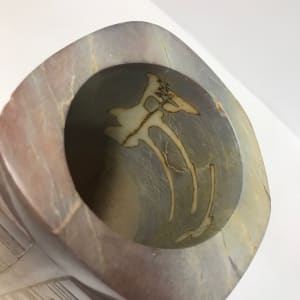Cong (formerly called a ""T'sung"") red and white jade. When looked at from above or below the distinctive shape of the traditional Cong is a circle-in-a-square, a form which has continued to symbolize the unity of Heaven and Earth in China and around the world. The Cong is the oldest known form of the classic mandala symbol. Similar objects are found from the Late Neolithic period, Liangzhu culture, ca.3300-2200 B.C.E.
The Cong is a vessel that holds nothing, or perhaps more accurately, it contains "nothingness." They were placed around the body when buried. At first, these ritual objects also were undecorated, but became richly decorated with symbolic shapes and faces. Modern scholars are unsure of the meaning of these objects. However, the surviving esoteric Taoist tradition explains that the "nothingness" at the center of the bi and the cong is the path that spirit takes from the earthly world to the heavenly world. The cong were made in many sizes, apparently depending on the wealth of the deceased. They are all made of sacred jade. Research on the exact dates for all of the Early Chinese pieces is an ongoing curatorial process. (FLG)
- Subject Matter: China
- Collections: Sacred World Art Collection

